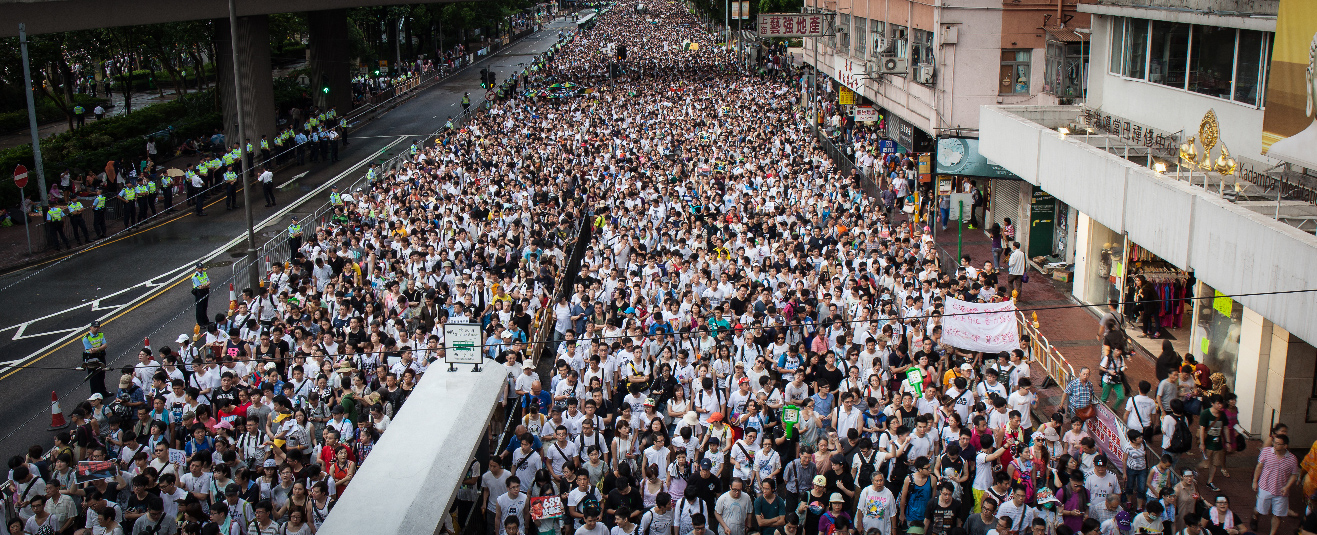Hong Kong might seem an unlikely setting for popular democratic struggle. Yet on the 1st of July 2014, in the greatest public demonstration since the 2003 rally to mark the anniversary of Hong Kong’s return its motherland, over half a million people took to the streets.
Among the many slogans and appeals, two stood out. Firstly, down with the Chief Executive. The deeply unpopular head of the special administrative region of Hong Kong, elected on the 1st of July 2012 by 689 of 1,200 electors in an election that was closely monitored and controlled by Beijing. Secondly, a call for genuine democratic elections for a new Chief Executive in 2017, without Beijing sanctioning the candidates.
According to Beijing’s interpretation of the Basic Law (the mini-constitution of Hong Kong) the next Chief Executive election can be held in 2017. The local opposition believe elections should have been held in 2007. Those who took to the streets on the 1st of July want genuinely democratic elections, without interference from Beijing. After the July 1st rally a few thousand people decided to stay in the Central District to “rehearse” Occupy Central: a civil disobedience movement led by two professors and one clergyman to fight for genuine elections. A real occupation will occur if Beijing attempts to control who can stand for election in 2017. This could happen as early as next month when Beijing officially responds to the request. Police arrested over five hundred people during the 1st of July demonstrations. Amongst them over a dozen social workers and social work students. So far, the police have made no charges.
On the cyber-front, the Occupy Central movement hosted an online civil “referendum” – a term that triggers much hostility from the Beijing government – to allow the public to vote on their preference for Chief Executive candidate nomination mechanism. All three choices had elements of nomination by citizens. Nearly 680,000 took part in the online referendum, and another 100,000 participated off-line. During the referendum massive and sophisticated distributed denial of service (DDoS) attacks – unprecedented in Internet history – were launched against the servers running it. According to CloudFlare the attacks came in the scale of 300 GBPs at its peak. CloudFlare was the only web-service provider, out of four, who decided to continue its service and fought the attack by setting up a series of DNS sinkholes that stonewalled the attack traffic. The online referendum was successfully completed.
In order not to lose on the public opinion front, Beijing orchestrated a series of actions. Firstly, a campaign to collect signatures of local supporters to oppose Occupy Central collected over 800,000 signatures. Secondly, Beijing applied pressure on all media who supported the opposition. A few days ago, an outspoken online newspaper, the House News (inspired by the Huffington Post) decided to shut down. The publisher said he sensed great fear in running the newspaper. Pressure was applied on local businesses not to place advertisements in media that support the opposition, making the newspaper financially unviable. The print media has largely been tamed, it is now the turn of online media.
The battle for democracy on the ground and online will continue. More will be coming.
Image credit | Flickr | alcuin lai
